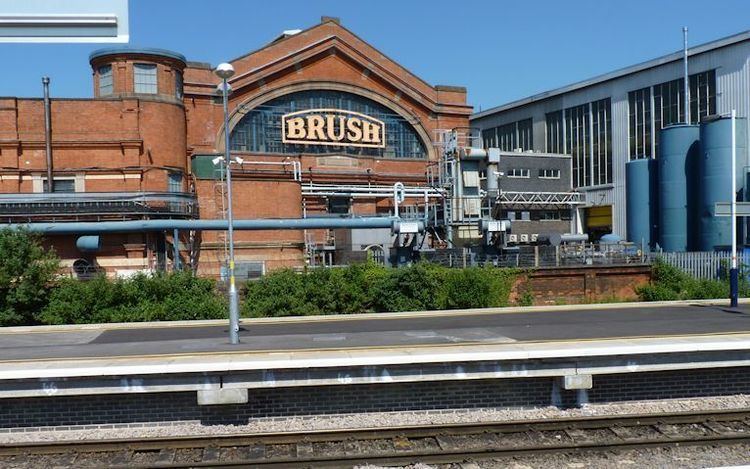Founder Charles F. Brush Parent organization Brush Holdings Limited | Founded 1879 | |
 | ||
Headquarters Loughborough, United Kingdom | ||
Brush Electrical Machines is a manufacturer of large generators for gas turbine and steam turbine drive applications, based at Loughborough in Leicestershire, United Kingdom.
Contents
History
In 1879, a company was established in Lambeth London, called the Anglo-American Brush Electric Light Corporation. Its formation was to exploit the invention of Charles Francis Brush, who was born in Cleveland Ohio in 1849 and who had invented his first electric dynamo in 1876.
He founded a company called the American Brush Company, which stayed in business in the USA until about 1891. As the business grew in Lambeth due to the demand for new electrical apparatus, larger premises were required and the Anglo-American Brush Electric Light Corporation moved 100 miles north to the Falcon Works at Loughborough in 1889.
In 1914, the company began manufacturing Ljungstrom steam turbines under licence.
Over the next sixty years the business grew by acquisitions until in 1957 the Brush companies were incorporated into the Hawker Siddeley Group under the new name of the Brush Electrical Engineering Company Limited. Within the Hawker Siddeley Group the company manufactured a vast range of electrical products including; turbo-generators, salient pole machines, induction motors, traction motors and generators, traction locomotives, switchgear, transformers and fuses.
In November 1991 Hawker Siddeley Electric Power Group was subject to a hostile takeover bid of £1.5 billion from BTR plc, the large engineering conglomerate. The bid was successful so the Brush companies then became part of the BTR organisation. The most recent change in Brush’s history occurred in November 1996 when the FKI Group of Companies acquired the Hawker Siddeley Electric Power Group from BTR for a price of £182 million.
On 1 July 2008, Melrose plc completed the acquisition with FKI, Melrose being a specialist investor in the manufacturing industry, is now registered on the London Stock Exchange. As stated on its website, "Melrose buys good manufacturing businesses with strong fundamentals whose performance can be improved. Melrose finances its acquisitions using a low level of leverage, improves the businesses by a mixture of investment and changed management focus, sells them and returns the proceeds to shareholders", and it seeks to improve returns to shareholders by working with divisional managers to help improve margins and generate sustainable cash flows and profitable growth.
The takeover and new management impacted morale, trust and employee engagement with the long-standing skilled workforce, with the result of relationships between management and trade unions remaining poor. There was a view amongst employees and the union, together with middle managers, that they were not being listened to following the changes in senior management arising from the takeover.
During the last 125 years, various Brush companies (Brush Switchgear, Brush Transformers, Brush Traction and Brush Control Gear) have existed on the Falcon Works site, but throughout this period Brush Electrical Machines Ltd manufacturing generators and motors has always been the largest company. Over 5,000 staff were employed on the site during the 1960s and 70s; today there are approximately 720 staff, 450 of which are direct production personnel. The following products are manufactured at the Loughborough facility:
Air-cooled turbogenerator in the range of 20 to 225MVA, Turbomotors from 10 to 100MW and the associated control equipment each.
Aircraft manufacture
In 1915, Brush Electrical were one of a number of companies outside the established aviation contractors selected by the Royal Navy to receive orders for aircraft to meet the expanding needs of the Royal Naval Air Service. Brush completed 650 aircraft by the end of 1919, including 400 Avro 504s and 142 Short Type 184s. It also built de Havilland Dragon Rapides during the Second World War, taking over production from de Havilland in 1943 and building 346 aircraft by the time production ended in 1945.
